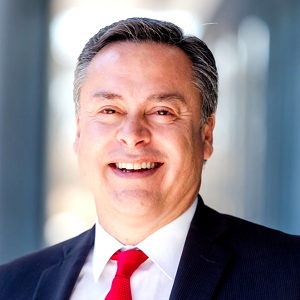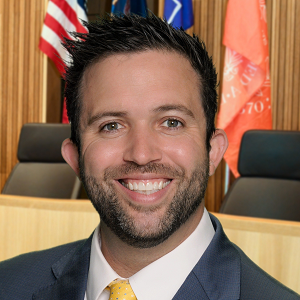Top-Level Takeaways
- Despite its popularity among consumers, a 2024 survey found only 1.5% of credit unions currently offer BNPL.
- Credit unions have reduced BNPL risks by introducing it to members as a post-purchase option.
- Credit unions with BNPL programs report that members who use it largely use it for essential purchases, such as household needs and groceries.
Changes in consumer behavior in the past few years have set the stage for new payments innovations that promise greater convenience and financial stability. Buy Now, Pay Later (BNPL) programs are among the latest trends that have spiked in popularity. A 2023 study from Statista found roughly half of U.S. adults have used BNPL services, and nearly 40% of those who haven’t said they could imagine doing so in the future.
It’s not hard to grasp the appeal. It’s convenient, there are no upfront fees, and borrowers can customize how they pay back a sum over time. There are also no lengthy applications or approval processes, making it easier to obtain than traditional personal loans or credit cards.
But no innovation is without its downsides, and the credit union industry has been slow to embrace the trend.
According to a March 2024 survey from PYMTS and Velera, only 1.5% of credit unions currently offer BNPL. Although nearly half of the survey’s respondents said they plan to introduce a program in the next three to six years, the other half have no plans whatsoever to adopt it.

“Fintechs are the ones providing this for the consumer right now,” says Pierre Cardenas, CEO of Capitol Credit Union ($213.2 M, Austin, TX). “The credit union industry better hop on board because members are going to keep going to these other options first.”
According to Cardenas, Capitol began rolling out a BNPL offering to its members less than a year ago after observing its popularity.
“The consumer has already received this as a mainstream product,” he says. “Either we jump on it, or it’s going to bypass us.”
Buy Now, Pay Later … The Credit Union Way
CU QUICK FACTS
CAPITOL CREDIT UNION
HQ: Austin, TX
ASSETS: $213.2M
MEMBERS: 13,174
BRANCHES: 3
EMPLOYEES: 49
NET WORTH: 12.3%
ROA: 0.15%
A common concern about Buy Now, Pay Later is that it can lead to overspending. A 2023 study from the Consumer Financial Protection Bureau found consumers who use BNPL are twice as likely to be delinquent on another credit product.
Credit unions pride themselves on looking after members’ financial health, so rather than adopting a pre-purchase method, Cardenas says the industry is embracing BNPL as a post-purchase option instead.
In general, this is how it works:
- A member makes purchases with their debit card.
- They go online and check their institution’s Buy Now, Pay Later plans.
- They view available offers on eligible purchases and decide which to split.
- They select the installment plan that works best for them.
- The purchase amount is then deposited back into their account.
For a member to take advantage of Capitol’s BNPL program, they must have been a member for at least 180 days and be in good standing. Eligible purchases must be from within the past 60 days, be at least $100, and cannot be a cash or cash equivalent purchase. Capitol sets a fixed interest rate of 15% but charges no other fees.

USF Federal Credit Union ($1.1B, Temple Terrace, FL) rolled out a similar post-purchase BNPL program in June.
“[Members have] made a conscious decision to make this purchase with funds already in their account,” says Richard Sellwood, vice president of member experience. “This is an option to say, hey, if you’d like that money back and would rather make a couple of payments on it, we’ll put the money back and you can.”
Like Capitol, USF FCU requires members to be with the credit union for at least 180 days. It also won’t allow members to have more than three BNPL plans open at a time. The credit unions charges a 17.9% interest rate and requires purchases to be at least $100 and no more than $2,500.
A March 2024 study determined Buy Now, Pay Later tools are among the top features consumers want from their payments options. Read more in “Members Want BNPL. How Will You Respond?“
Early Successes And Challenges
CU QUICK FACTS
USF FCU
HQ: Temple Terrace, FL
ASSETS: $1.1B
MEMBERS: 73,359
BRANCHES: 9
EMPLOYEES: 202
NET WORTH: 9.3%
ROA: 0.23%
With any new offering, there are lessons to learn and adjustments to make.
Sellwood says USF FCU took a “crawl, walk, run” approach with its BNPL rollout.
“We wanted to do some vetting,” he says. “We wanted to look at how often our membership was using other fintech options and examine initial performance first.”
Sellwood says members have opened approximately 350 BNPL plans so far, and the credit union has plans to increase promotion efforts soon.
“Unexpected expenses happen to people all the time,” he says. “BNPL creates some nice flexibility to make it easier for our members.”
For Capitol, Cardenas says participation from members was slow in the first few months.
“I’m looking at the statistics wondering why members are not using ours, and we realized it was in part because they could not choose it at the time of purchase,” the CEO says. “So, we decided to experiment with the next best thing.”
Capitol worked with its vendor to introduce push notifications to alert members through their mobile app that they have purchases eligible for BNPL. Members also receive an email once a week.
“When we had just started, we were getting 30 a month,” Cardenas says. “After we made that change, we’re up to 150 a month. It’s about getting into the psyche of the consumer and providing them with a real, valuable, easy way of doing business.”